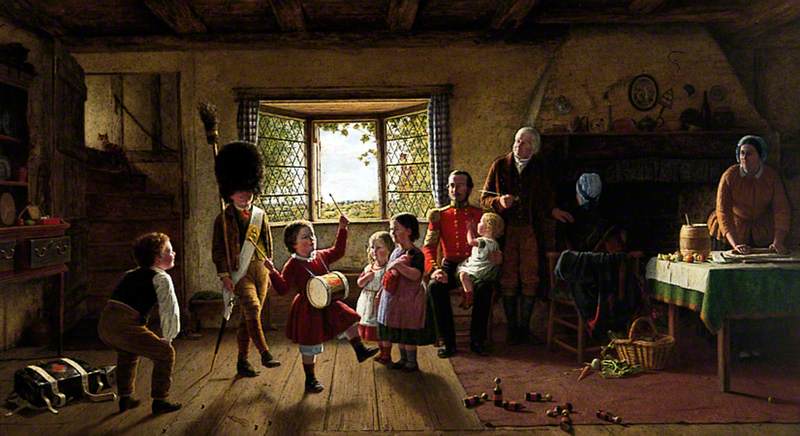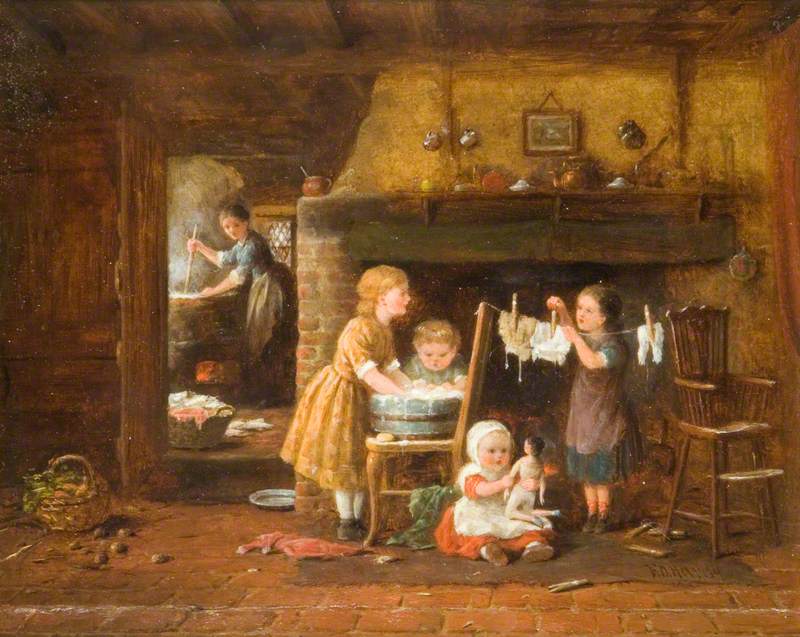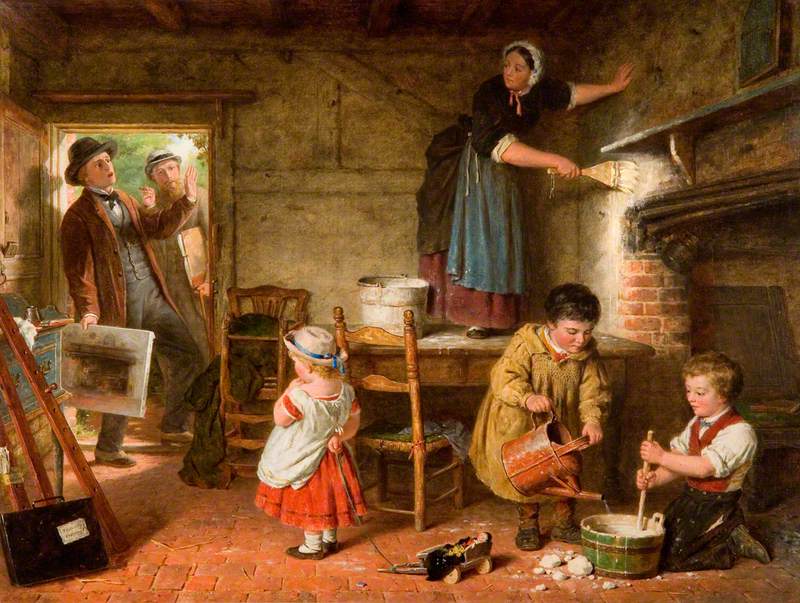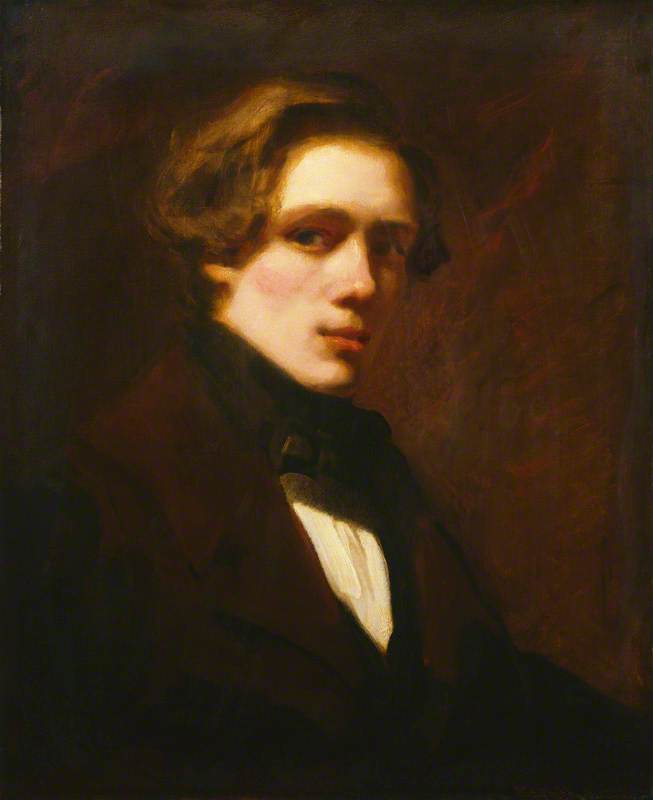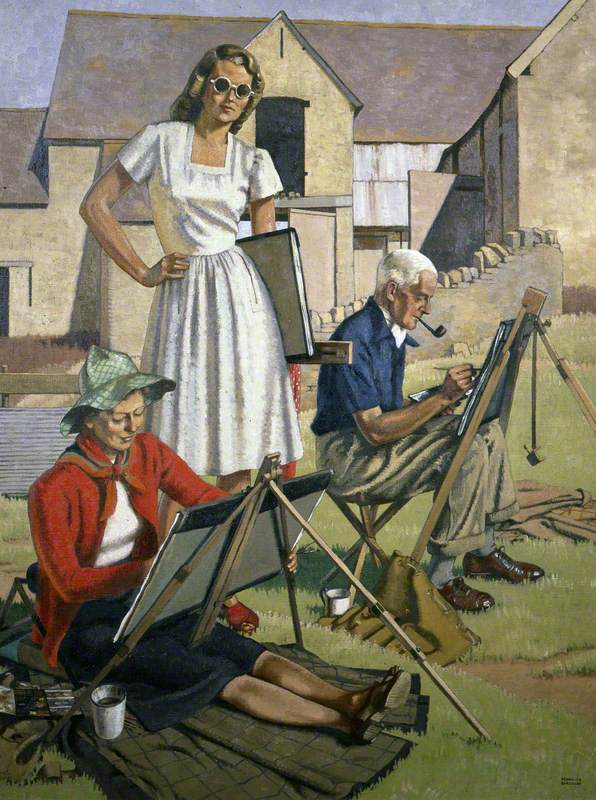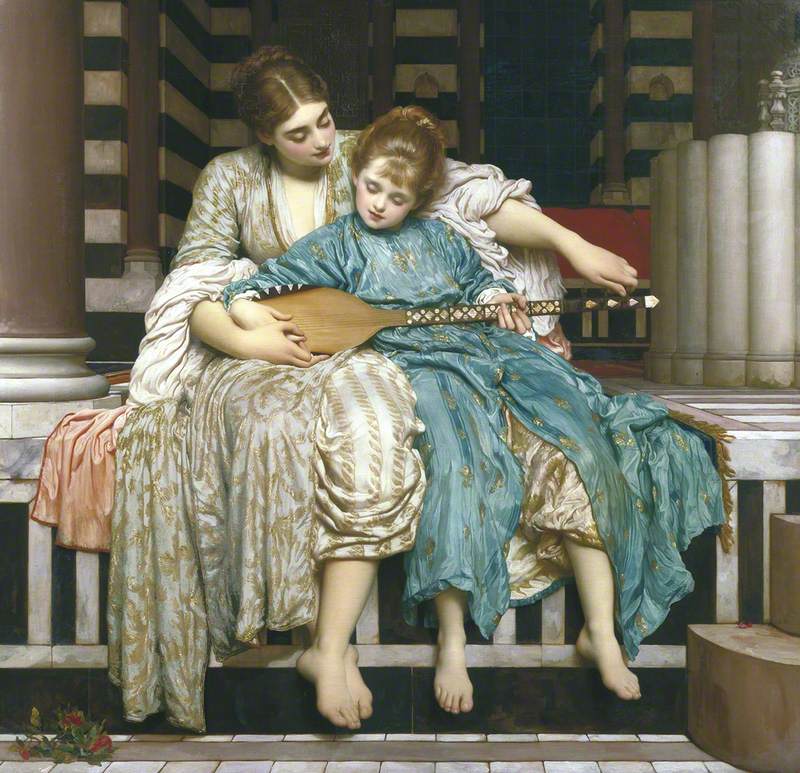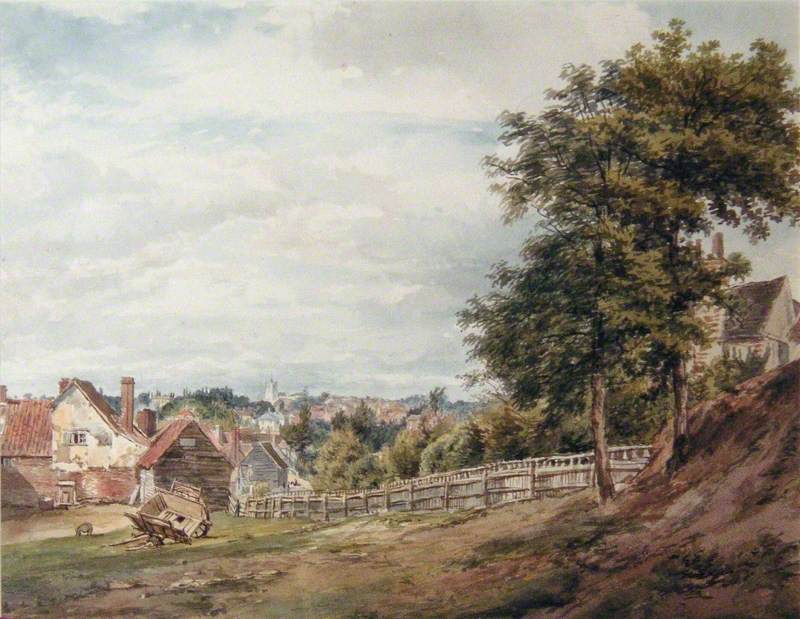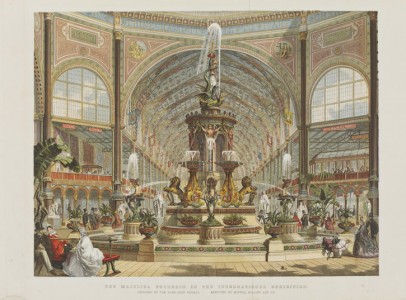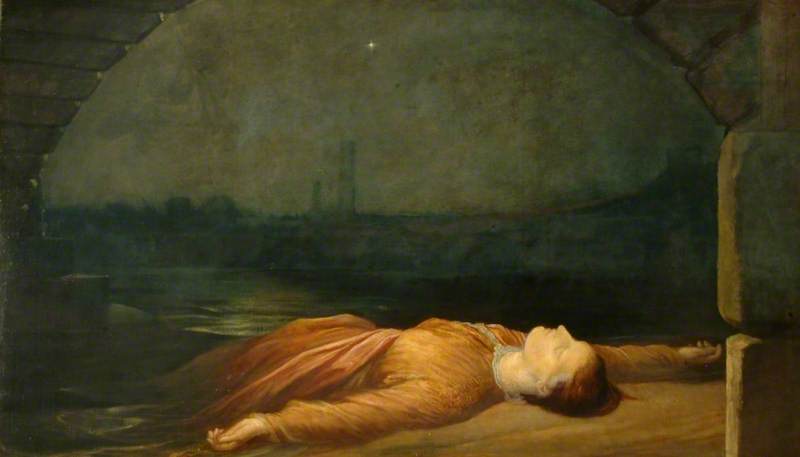Frederick Daniel Hardy (1827–1911) was a member of an extensive family of artists, many of whose work is on Art UK.
They include his brother George Hardy, his uncle James Hardy I of Bath and his cousin James Hardy II.
His son Frederic Rembrandt, known as Dorofield Hardy, was best known as a copyist of portraits.
Queen Victoria (1819–1901)
(copy of Heinrich von Angeli)
Dorofield Hardy (1853–1937) 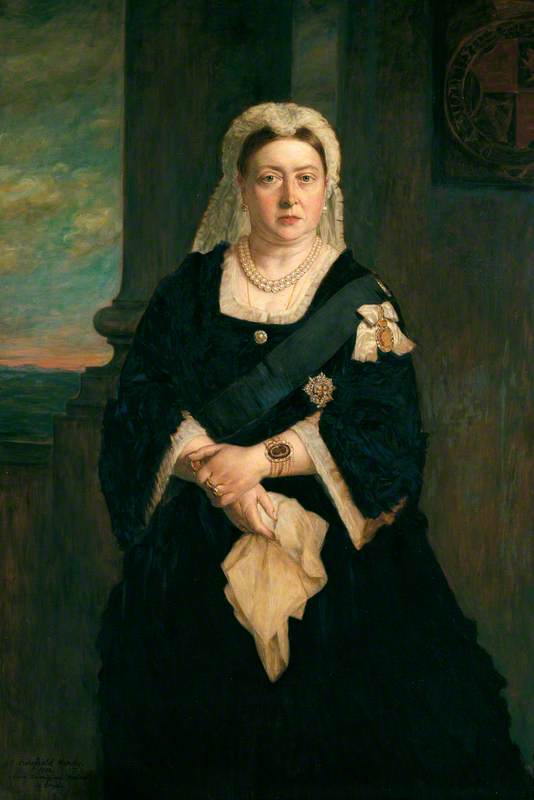
His daughter Amelia Gertrude Hardy (1865–1952) also painted. His artist nephew David Hardy died young, but David's son Paul Hardy was a long-lived and prolific illustrator.
Heywood Hardy (1842–1933) was the best-known artist in the family and received many accolades.
Heywood married the granddaughter of portraitist Sir William Beechey, and three of his daughters became painters.
Frederick Daniel Hardy exhibited at the Royal Academy almost continuously over six decades. His scenes of domestic and small-town life appealed to wealthy manufacturers in the Midlands and Northern England who enjoyed his evocations of an Edenic, pre-industrialised past.
Living in the small village of Cranbrook, Kent, he was one of a group of painters who later became known as the Cranbrook Colony, which included Royal Academicians Thomas Webster and John Callcott Horsley. The artists' residence in rural Kent provided affordable models, authentic country dress and locations, and inspiration. In common with other artistic colonies the growing railway network played a vital role by enabling the artists to travel by train to London to sell their work.
In The Dismayed Artist (1866) Hardy describes the sort of problems encountered in recording English rural life.
The artist appears at the door of a cottage, a half-completed canvas in hand. His intention was to continue his painting of the old-style hearth but in his absence the mother and children have started coating its antique features with lime-wash. The men, said to be the artist himself and his brother George, have just arrived from London, luggage labels on the easel and suitcase indicating they have travelled by train from Charing Cross to nearby Staplehurst.
The artist's look of surprise hints at the gulf between outsiders and locals. However, Hardy depicts the countrywoman sympathetically, providing an image of industry, sobriety and self-reliance that would have appealed to his industrialist patrons.
Hopefully contemporary spectators were more receptive to the painting's visual clues than the sales correspondent from The Times who entitled it: 'The Distressed Artist on beholding the havoc made by his domestics in his studio' – an error of interpretation that would have dismayed the artist even further.
Mary Rose Rivett-Carnac, Art UK Copyright Officer
